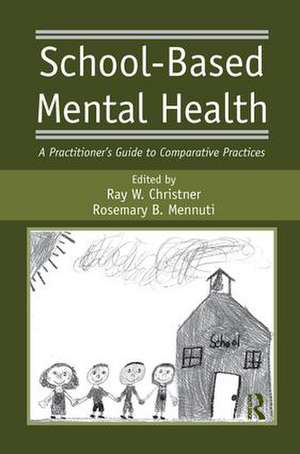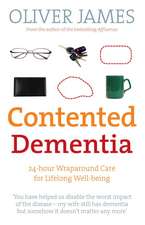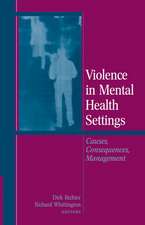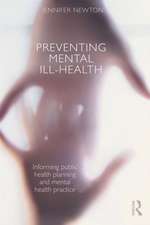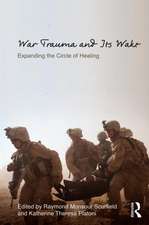School-Based Mental Health: A Practitioner's Guide to Comparative Practices
Autor Ray W. Christner, Rosemary B. Mennutien Limba Engleză Paperback – 24 noi 2015
| Toate formatele și edițiile | Preț | Express |
|---|---|---|
| Paperback (1) | 406.95 lei 6-8 săpt. | |
| Taylor & Francis – 24 noi 2015 | 406.95 lei 6-8 săpt. | |
| Hardback (1) | 480.29 lei 6-8 săpt. | |
| Taylor & Francis – 22 dec 2008 | 480.29 lei 6-8 săpt. |
Preț: 406.95 lei
Preț vechi: 428.37 lei
-5% Nou
Puncte Express: 610
Preț estimativ în valută:
77.87€ • 81.47$ • 64.69£
77.87€ • 81.47$ • 64.69£
Carte tipărită la comandă
Livrare economică 02-16 aprilie
Preluare comenzi: 021 569.72.76
Specificații
ISBN-13: 9781138981386
ISBN-10: 1138981389
Pagini: 456
Dimensiuni: 152 x 229 x 23 mm
Greutate: 0.59 kg
Ediția:1
Editura: Taylor & Francis
Colecția Routledge
Locul publicării:Oxford, United Kingdom
ISBN-10: 1138981389
Pagini: 456
Dimensiuni: 152 x 229 x 23 mm
Greutate: 0.59 kg
Ediția:1
Editura: Taylor & Francis
Colecția Routledge
Locul publicării:Oxford, United Kingdom
Public țintă
Professional Practice & DevelopmentCuprins
An Overview of School-Based Practice. Part I: Foundation of Universal Interventions. Problem-solving Approaches in Prevention. Building Resiliency in Schools. School-wide Behavioral Support. Minimizing Barriers to Learning. Part II: Selected and Targeted Interventions. Cognitive-Behavioral Approaches. Individual Behavior Supports. Reality Therapy. Client-centered Therapy. Family System Interventions. Adlerian/Constructivist Approaches. Part III: Alternative Interventions. Play Therapy. Art Therapy. Movement Therapy. Mindfulness Interventions. Part IV: Summary. Integrating Perspectives into Practice. Appendix.
Notă biografică
Ray W. Christner, Psy.D., NCSP, is an Assistant Professor and Director of the Educational Specialist Program in the Department of Psychology at the Philadelphia College of Osteopathic Medicine.
Rosemary B. Mennuti, Ed.D., NCSP, is Professor and Director of the School Psychology Program in the Department of Psychology at the Philadelphia College of Osteopathic Medicine.
Rosemary B. Mennuti, Ed.D., NCSP, is Professor and Director of the School Psychology Program in the Department of Psychology at the Philadelphia College of Osteopathic Medicine.
Recenzii
"School psychologists, clinical psychologists who practice in schools, school guidance counselors and community mental health providers would all benefit from this book [will be the main audiences.] I would suggest it could be used for classes in school psychology, clinical psychology and school-based mental health provider training programs in courses devoted to interventions in the schools. Depending on the focus of the class, it could be used as either a main or supplemental text. The current federal mandates for increases in student academic performance, for both students without and with special education provisions, are clear indicators that the market for such a book is growing. There is a federal mandate for supportive services regardless of "where the learner" is at. As a state consultant/trainer, I really like the case study approach the editors are intending to use. Utilizing this method, all contributors will have a common base upon which to "build their take" re: model of intervention. I would say it is a very "leading edge" approach and will be a very refreshing change from the typical book format which is a substitute for a lecture on a topic vs. an applied approach. Based on the overview provided, as well as my having reviewed their previous book, the editors’ writing style and intended reading level is very appropriate for the intended market. I recommend this book for publication. I do not currently teach a course, but would recommend it to others who do. I feel the case study format will be a very refreshing change from the typical book format which is a substitute for a lecture on a topic vs. an applied approach."
- Carl J. DiMartino, Ph.D., NCSP, President-Elect, National Association of School Psychologists
"I see the book being used in a number of introductory classes and field-based practicum classes. I see the main intention of the book as one to be used in pre-service university training for any mental health professional being trained to work in a school setting. This would include school psychologists, school counselors, and social workers. A secondary audience might be clinical psychologists in training or those making a transition into school-based mental health. Another secondary audience might be psychologists and social workers in private practice with a focus on school-age mental health. The need for more mental health services is growing as is the need for more professionals trained to work with such children. Another way to describe what we are seeing in public schools today is more clinical children entering school and more and more children on medication. So I think the market for such a text is growing depending on the nature of the text. Will the text cut to the chase, be user-friendly, and put theory into practice? Remember we are talking about pre-service training so we need a text that will connect with students and offer concrete examples and evidence based interventions. Generally I like the book’s proposed chapters. The material is timely and has a longer potential shelf-life if the authors offer "leading edge" approaches with making the readers connect with their particular therapeutic model. As an example, I know many practitioners who would love to learn play therapy with children but probably will never take a course dedicated to just play therapy. Thus, if the chapter offers the reader enough basic skills to begin and solid references for additional reading, the shelf-life is increased. An appendix with lots of forms that practitioners can copy is a good idea. Practitioners love forms. Overall, I think the book has a market and is consistent with current needs of providing more school-based mental health. It’s also in line with contemporary literature discussing the same issues. If designed as a text I would differently use the text if it were well written, not redundant, and had additional resources. I would use it as a supplementary text again if I thought my students could relate to the chapters and might find in useful in field-based classes."
- Jim Deni, Ed.D., Program Director, School Psychology Program, Appalachian State University
"This volume provides school-based practitioners with a comprehensive and comparative guide to the strategic interventions, therapeutic modalities, and treatment approaches that are most commonly and effectively used in educational settings...[The]emphasis on case examples and the comparative structure of the volume will provide a level of hands-on and practical learning that is helpful for both students and mental health practitioners working in schools for the first time, and as a resource for more seasoned professionals who need to expand the tools at their disposal." - Family Therapy
- Carl J. DiMartino, Ph.D., NCSP, President-Elect, National Association of School Psychologists
"I see the book being used in a number of introductory classes and field-based practicum classes. I see the main intention of the book as one to be used in pre-service university training for any mental health professional being trained to work in a school setting. This would include school psychologists, school counselors, and social workers. A secondary audience might be clinical psychologists in training or those making a transition into school-based mental health. Another secondary audience might be psychologists and social workers in private practice with a focus on school-age mental health. The need for more mental health services is growing as is the need for more professionals trained to work with such children. Another way to describe what we are seeing in public schools today is more clinical children entering school and more and more children on medication. So I think the market for such a text is growing depending on the nature of the text. Will the text cut to the chase, be user-friendly, and put theory into practice? Remember we are talking about pre-service training so we need a text that will connect with students and offer concrete examples and evidence based interventions. Generally I like the book’s proposed chapters. The material is timely and has a longer potential shelf-life if the authors offer "leading edge" approaches with making the readers connect with their particular therapeutic model. As an example, I know many practitioners who would love to learn play therapy with children but probably will never take a course dedicated to just play therapy. Thus, if the chapter offers the reader enough basic skills to begin and solid references for additional reading, the shelf-life is increased. An appendix with lots of forms that practitioners can copy is a good idea. Practitioners love forms. Overall, I think the book has a market and is consistent with current needs of providing more school-based mental health. It’s also in line with contemporary literature discussing the same issues. If designed as a text I would differently use the text if it were well written, not redundant, and had additional resources. I would use it as a supplementary text again if I thought my students could relate to the chapters and might find in useful in field-based classes."
- Jim Deni, Ed.D., Program Director, School Psychology Program, Appalachian State University
"This volume provides school-based practitioners with a comprehensive and comparative guide to the strategic interventions, therapeutic modalities, and treatment approaches that are most commonly and effectively used in educational settings...[The]emphasis on case examples and the comparative structure of the volume will provide a level of hands-on and practical learning that is helpful for both students and mental health practitioners working in schools for the first time, and as a resource for more seasoned professionals who need to expand the tools at their disposal." - Family Therapy
